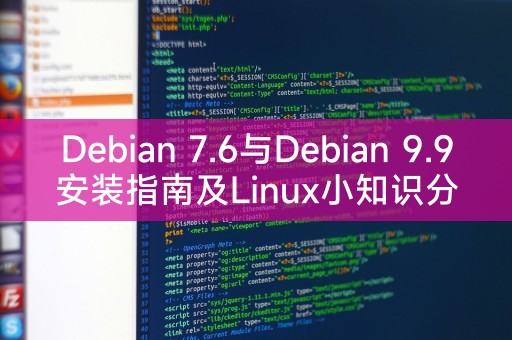
php editor Youzi brings you an installation guide for Debian 7.6 and Debian 9.9, and also shares some little knowledge about Linux. Debian is a popular Linux distribution that features stability and security. This article will provide readers with detailed installation steps and precautions to help you successfully complete the Debian installation. In addition, some basic knowledge of Linux will also be shared to help readers better understand and use this powerful operating system. Whether you are a beginner or an experienced user, you can get useful information and tips from this article. Let's explore the world of Debian together!

1. Download the Debian 7.6 installation image file and write it to a USB flash drive or CD.
2. Insert the U disk or CD into the computer, restart and enter the BIOS settings, and set the startup item to the U disk or CD.
3. Enter the Debian installation interface and select the language and keyboard layout.
4. For disk partitioning, you can choose manual partitioning or use automatic partitioning tools.
5. Set the username and password, and select the software package to be installed.
6. Start installing the system and wait for the installation to complete.
1. Download the Debian 9.9 installation image file and write it to a USB flash drive or CD.
4. For disk partitioning, you can choose to use the entire disk or use manual partitioning.
During the installation process, you need to pay attention to the following points:
1. Make sure the computer meets Debian installation requirements, such as memory, disk space, etc.
2. When partitioning a disk, you need to operate with caution to avoid data loss.
3. When setting the username and password, you need to ensure their security.
After the installation is completed, you can configure the system and install software to meet your needs.
Here, share a little Linux knowledge: File permissions in the Linux system are divided into three permissions: read, write and execute, represented by r, w and x respectively. Each file or directory has an owner You can use the chmod command to modify the permissions of a file or directory. For example, chmod 755 filename means to set the permissions of the file filename to the owner with read, write and execute permissions, the group it belongs to, and others. Users have read and execute permissions. Understanding how to set file permissions can better protect the security of the system and data.
The above is about the Debian 7.6 and Debian 9.9 installation guide and Linux knowledge sharing. I hope it will be helpful to you. If you have any other questions or need further help, please feel free to contact me. I wish you the best. Happy using it!
The above is the detailed content of Debian 7.6 and Debian 9.9 installation guide and Linux knowledge sharing. For more information, please follow other related articles on the PHP Chinese website!




